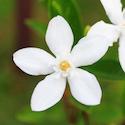Carolina Jasmine, also known with other exquisite names, such as, Carolina jessamine, Yellow jessamine, Evening Trumpet-flower and Poor Man's Rope. Gelsemium sempervirens, it is a unique “ jasmine” type variety, with an intense sweet fragrance, vibrant yellow-flower petal tone, belonging to the genus Gelsemium from the Loganiaceae family.
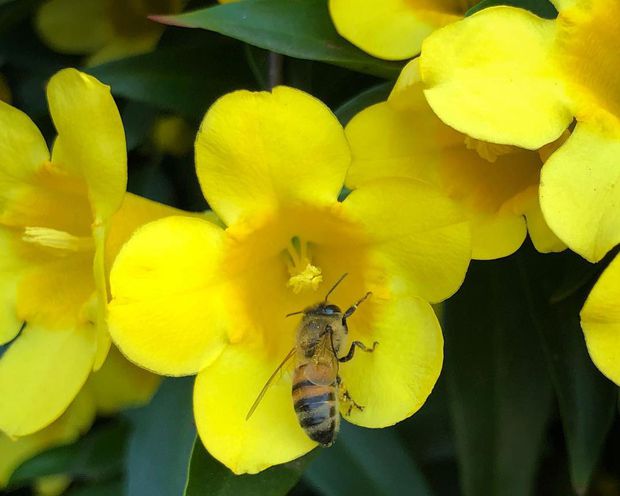
Carolina Jasmine is an evergreen growing vine, which is, originally native from Virginia, Florida as well as Arkansa, Texas and South Guatemala. Both famous and notorious for its dark, deep green foliage and trumpet-shape, yellow-colour flowers, Carolina Jessamine, can grow between 10 to 20 feet long, covering forest canopies and other common structures on urban areas, such as, fences, trees and parks. These amazing qualities, along with its glossy and waxy flowers have made of this variety, the always chosen option for suburban areas, but don’t be fooled by its beauty. Is Carolina Jasmine toxic to honey bees? Is Carolina Jasmine poisonous?
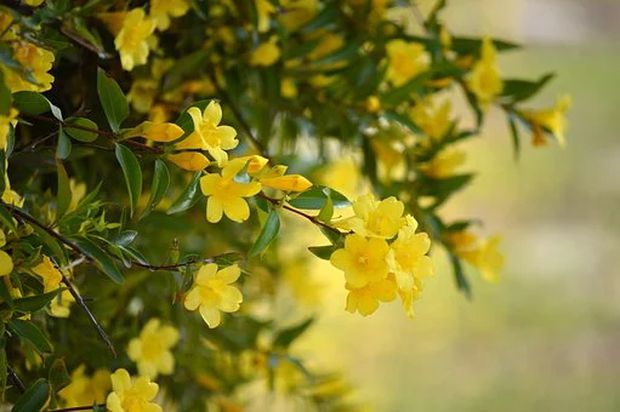
Yes. This jessamine variety, is highly poisonous to humans, dogs, cats, livestock and really toxic for honey bees, if ingested in high amounts. The reason behind its toxicity is that, Carolina jessamine’s flower buds, contain high amounts of strychnine-like alkaloids very similar to other medicinal plants such as Belladonna. These chemicals are highly toxic and are rapidly absorbed through the mucosa of the body, such as, the nose, mouth, stomach and small intestines. There can also be very poisonous, if entered in the body through inhalation, ingestion, and if the milky sap enters the wounded skin. In humans, Carolina jasmine flowers, have been used as drugs for the treatment of various disorders, such as, restlessness, mental irritability, insomnia, headache and convulsions. Moreover, the roots of the Yellow Jessamine, have been used in the treatment of migraine and neuralgia. The fluid extract of this plant, has also been used for its spasmolytic actions intreating convulsing disorders. Not many cases of intentional ingestions of Carolina Jasmine by humans have been reported until date, rather than the mistaken or confused case with similar plants or in the form of drug overdose for its therapeutic effects. Strychnine-like alkaloids are known to also cause agitation, as they affect the central nervous system, increasing the neuronal activity, excitability and ultimately spiking muscular activity.
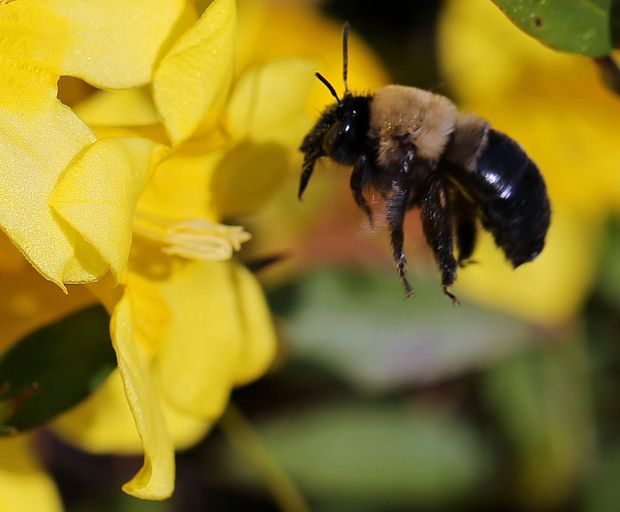
When Carolina Jessamine is ingested, the early symptoms of the intoxication include nausea, sweating, hypothermia, muscle weakness and respiratory depression as soon as 30 minutes after ingestion. Strychnine alkaloids are also involved in convulsions in invertebrated animals such as butterflies and honeybees which often times are found pollinating and feeding in these jasmine-like variety, with its maximum toxicity reached at the “spinal convulsion” level, although there are other areas of the central nervous system being stimulated as well affecting the motor function of these animals.
Poisoning of honeybees by Carolina Jasmine/jessamine seem to be taking place when the bees feed on the nectar and sap of the plant in large quantities, especially, when there are no other better choices of plants nearby and/or, if there is any other risk factor, such as, environmental drought and Carolina Jessamine blooming season. When the plant is in full bloom, many more honey bees, will be attracted to the plant. Early stages of poisoning in honeybees by Yellow jasmine, include behaviours resembling intoxication or drunkenness, a clear decrease in their overall activity and ultimately paralysis of the bee. After about 30 minutes of ingestion, the bees display a very distended and swollen abdomen. When this happens, is not hard to find and spot mummified pupae, larvae and dead worker bees, twenty-four hours after ingestion, in strong stocks around the plant, at the bottom, on the inside of the flower trumpet and the nearby hives.
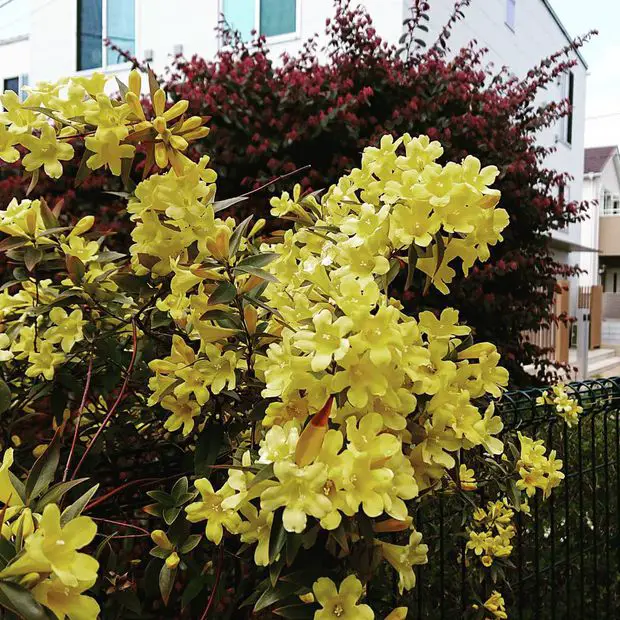
The environmental impact of a prolonged drought, the honeybees will find their feeding sources and choices very limited, and therefore they find themselves forced to feed on these Caroline jasmine plants around. This is a two in one attached problem, as when there is a prolonged drought, these Strychnine alkaloids will be very concentrated within the Caroline jasmine stems and flowers, given the decreased moisture in the whole plant. The adult bee population seem to survive the poisoning process, however, these bees after feeding on these Yellow Jasmines, will make honey that could also be very toxic and harmful for humans if consumed. There is a published study demonstrating these facts, in which scientist made use of a microcolony assay, involving paired worker bumble bees, feeding on artificial gelsemine, (an indole-alkaloid) rich nectar and they evaluated the oocyte development as read out of the toxicity of Caroline Jasmine. This published data, then analysed, the protein synthesis capabilities from the oocytes, as it is, a sensitive indicator of the actual utilisation of the protein and other metabolic processes, such as, the measurement of the carbohydrate concentrations in the haemolymph, as an indicator of gelsemine consumption.
The outcome of this scientific study showed that, high concentrations of gelsemine, significantly reduced the size and width of the oocytes in subordinate bees, and the oocyte development inhibition in dominant bees. From the plant’s perspective, producing a toxic nectar responds to an ecological function which is that wasps and bees feeding on this nectar, become sluggish, drunk and intoxicated, and this leads to bees to groom less. That means that more pollen is transferred between the yellow jasmine plants themselves, serving a more efficient pollination process.
Altogether, it seems that, although there are some survivor adult bees around Yellow Jasmine, the rest of the colonies and larvae seem to do very poorly after ingesting its nectar. Operating with caution, in terms, of planting Caroline Jasmine vines around the urban areas, is key, as that way we can minimise the access of dogs, cats and honeybees to these plants. Followed by the proper growing and care procedures, providing bees with extensive choices of food sources.
